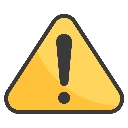

1 INTRODUCTION
Psychopharmacology can be daunting, but it doesn’t have to be. Unlike other fields of medicine like cardiology or endocrinology, which tend to involve processes that are easily visualized and follow a logical order, the concepts in psychopharmacology can seem random, illogical, and abstract. This can lead to frustration or boredom on the part of the learner.
This book aims to correct that. It pursues the goal of making the information stick with reckless abandon. It is shameless in its use of mnemonics and other memory aids. It wants to, and believes it can, make studying psychopharmacology fun. This approach should make the book helpful to healthcare providers from various disciplines and at various stages of training (including doctors, nurses, pharmacists, psychologists, physician assistants, social workers, and others), although it has been tailored most specifically for medical students in their preclinical and clinical years. The only prerequisites are a basic knowledge of physiology (including organ systems and cell biology), neurology (such as action potentials, synapses, and the autonomic nervous system), and pharmacology (agonists, antagonists, half-lives, and the like).
We’ll begin with a quick overview of neurotransmitters. From there, we will go over the prescription medications used to treat common mental illnesses such as depression, bipolar disorder, and schizophrenia. We will
then discuss recreationally used drugs, including how to recognize the clinical syndromes they produce and how to treat cases of substance abuse. Finally, we will finish with a brief overview of non-drug treatment options for psychiatric disorders.
Before we start, it can be good to remind yourself of exactly why you are sitting through this material, especially if you aren’t planning on becoming a psychiatrist. There are a few reasons. First, the vast majority of psychoactive drugs are being prescribed not by psychiatrists but by doctors, nurse practitioners, physician assistants, and healthcare professionals in other fields, with primary care forming the bulk of that. Therefore, it’s important for all prescribers to have a solid foundation in the subject to be able to practice responsibly. Second, even if you will not be prescribing psychiatric medications, you will surely encounter patients using psychoactive substances (whether prescribed or not), so you won’t be able to get away with ignorance on the subject for too long. Finally, being able to talk knowledgeably about brain stuff is always popular at parties.
While studying, look for the following boxes to identify high-yield
concepts! You should remember these well for both boards and wards.
Finally, a warning that the language in this book may occasionally be a bit salty. While every effort has been taken to avoid unnecessarily offensive language or concepts, certain mnemonics simply do not work in a more sanitized form. In addition, we should note that nothing in this book is intended to disrespect or trivialize the experiences of people suffering from mental illness. The hope is that, by making the information as memorable and accessible as possible, we can be better equipped to provide the best quality of care for our patients.
jordancarter 7 months ago
This study guide is clear, well-organized, and covers all the essential topics. The explanations are concise, making complex concepts easier to understand. It could benefit from more practice questions, but overall, it's a great resource for efficient studying. Highly recommend!
| Category | Testbanks |
| Comments | 0 |
| Rating | |
| Sales | 0 |
Buy Our Plan

















